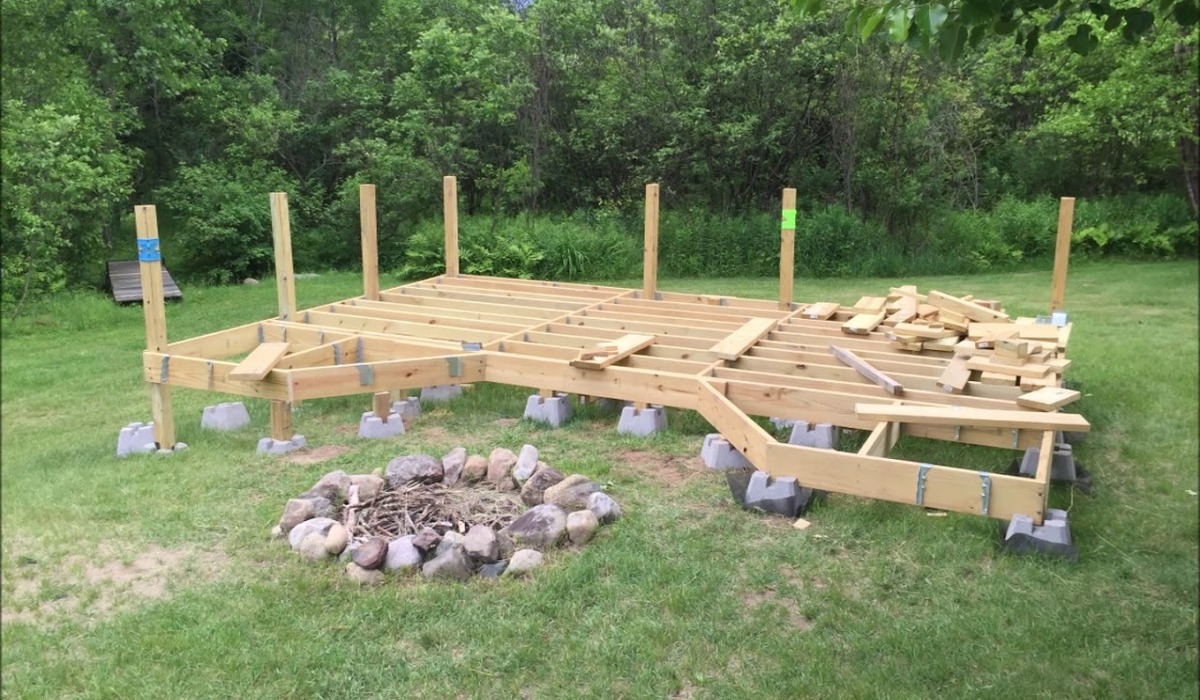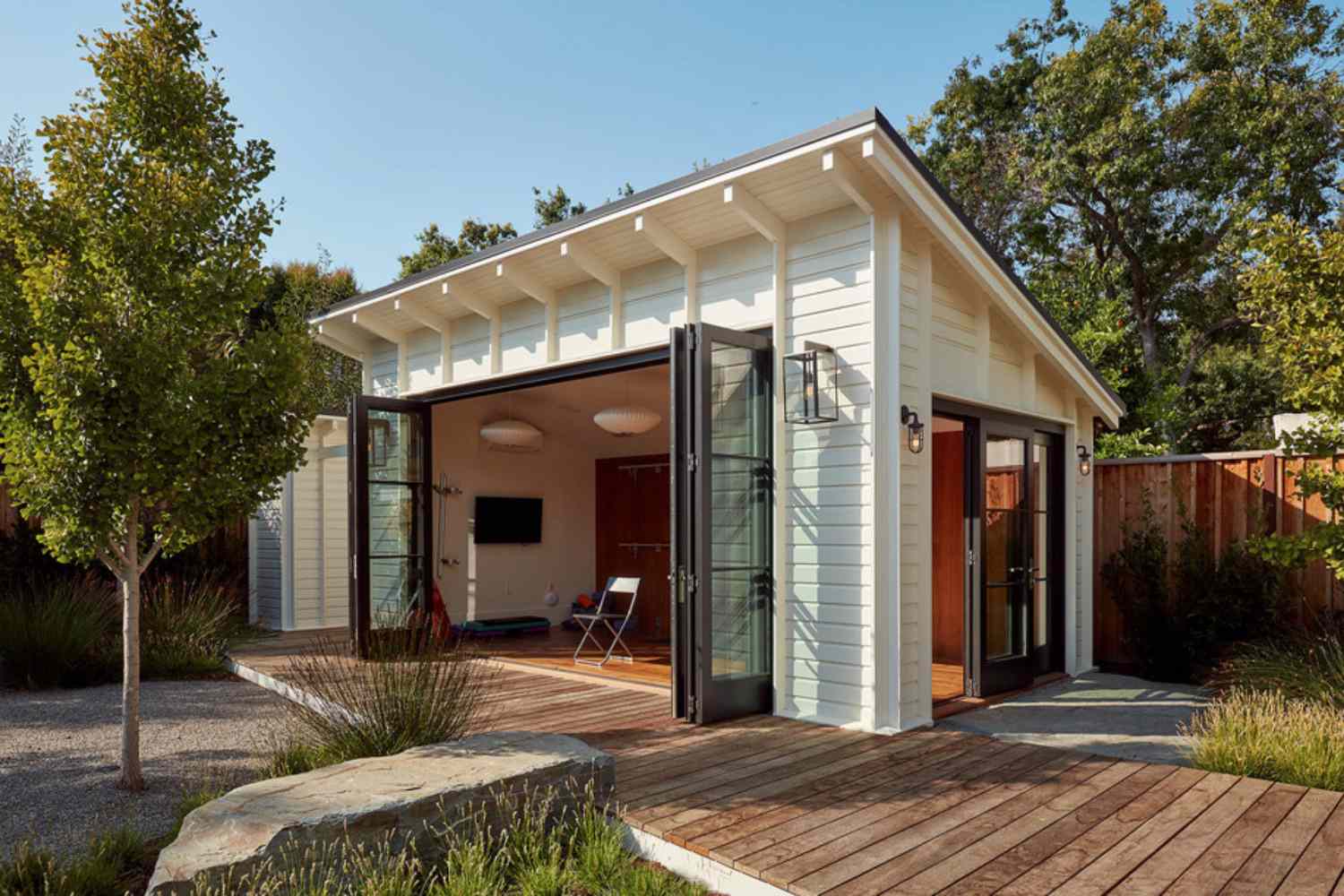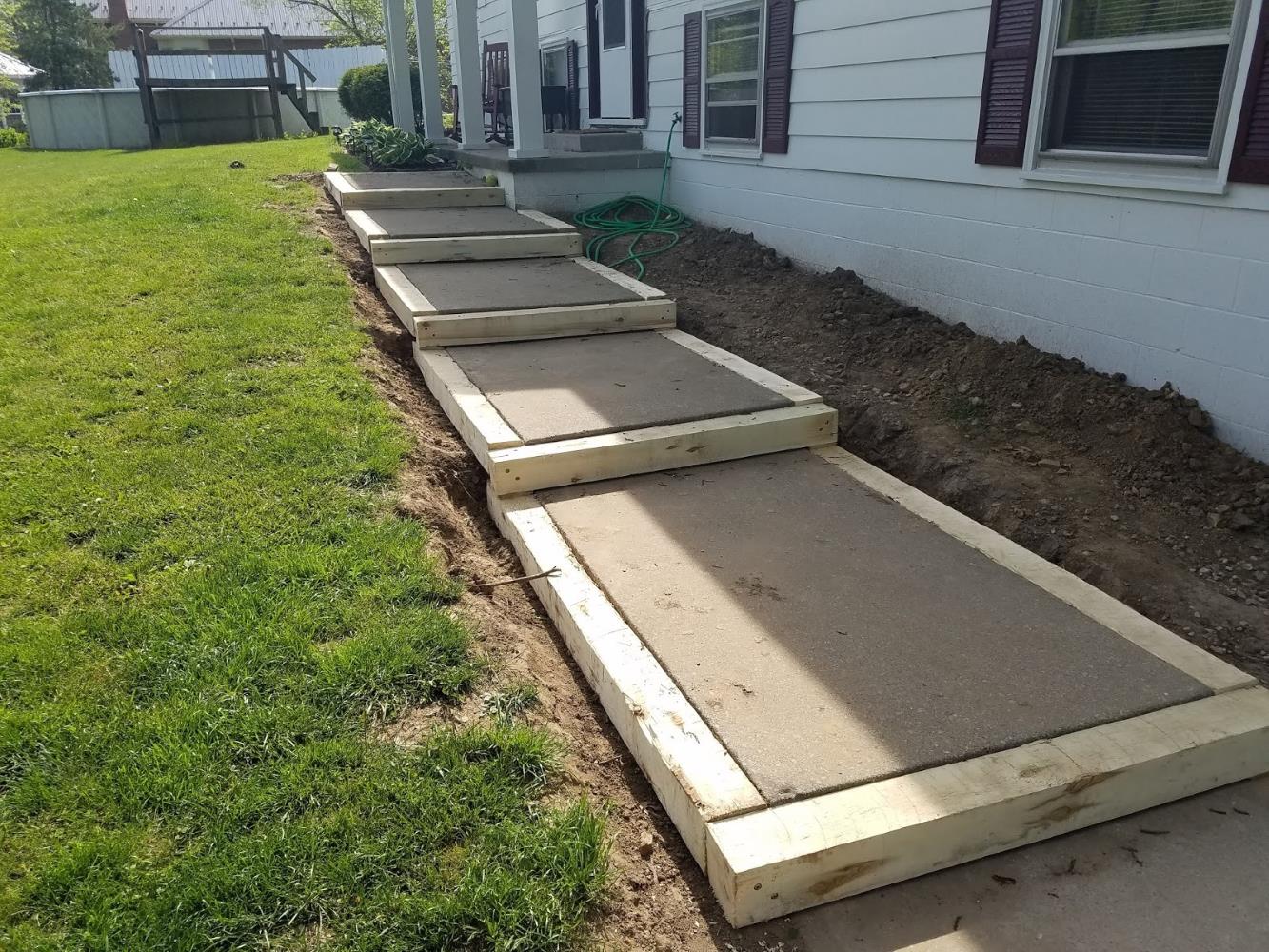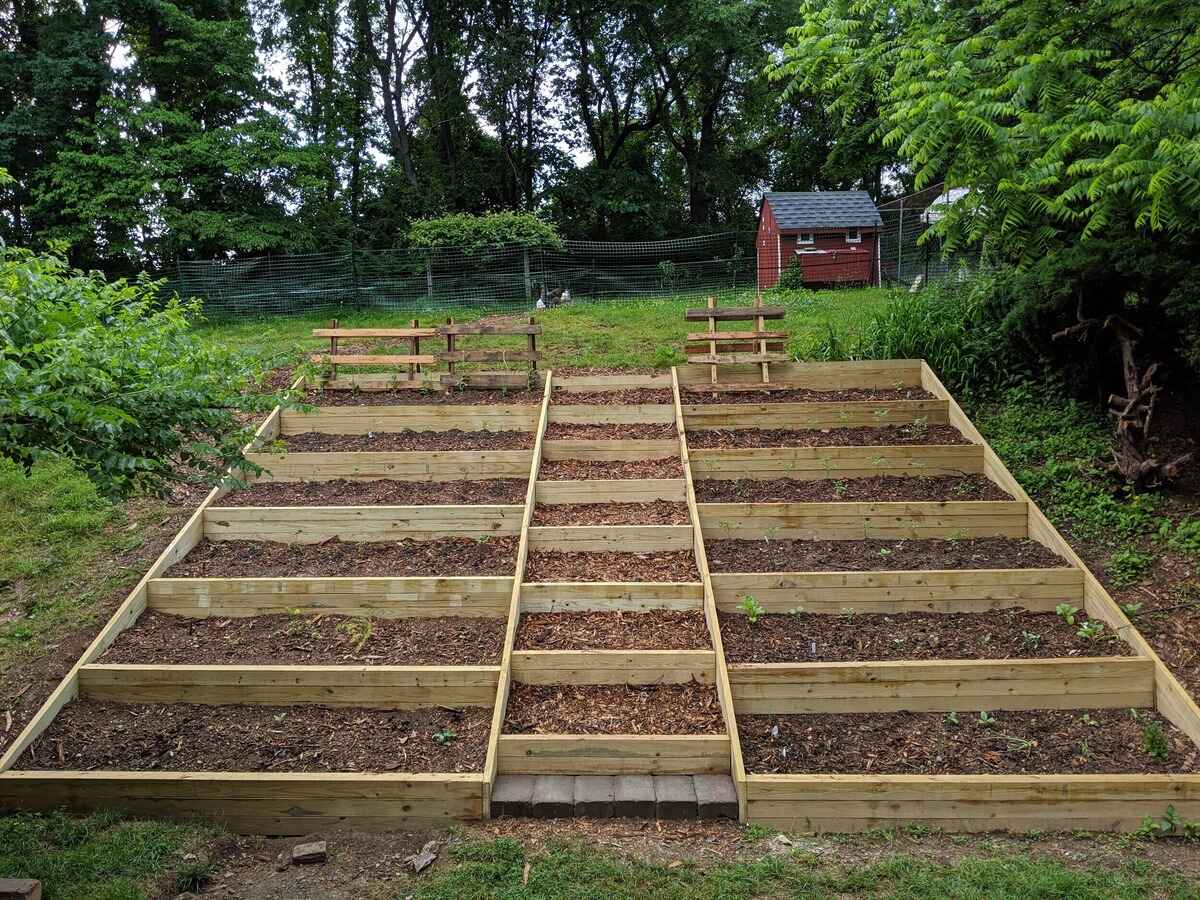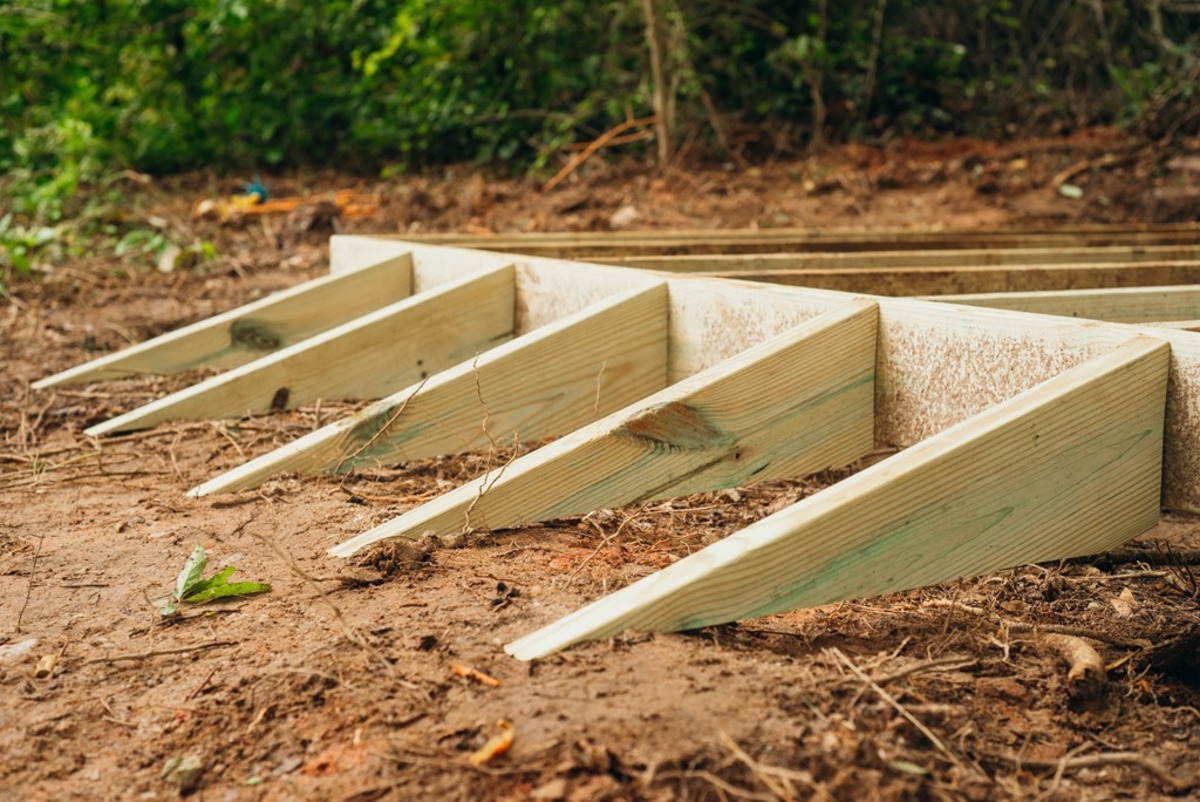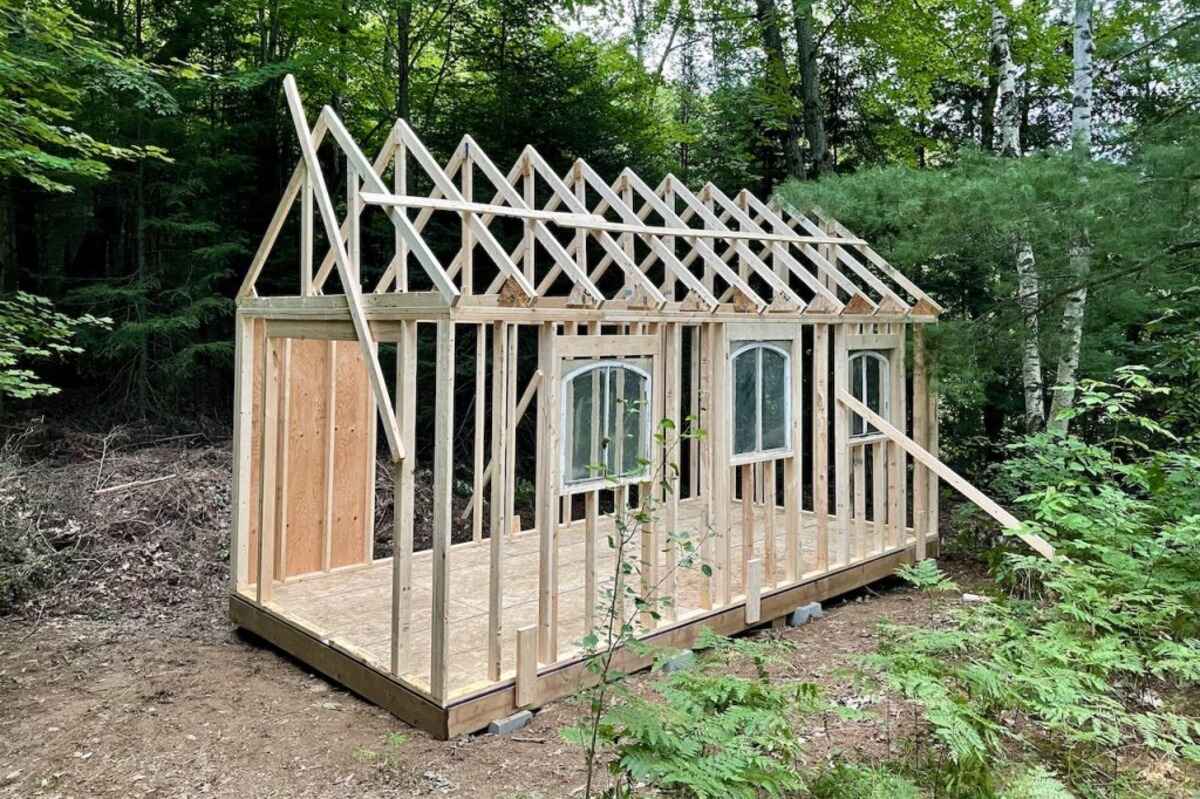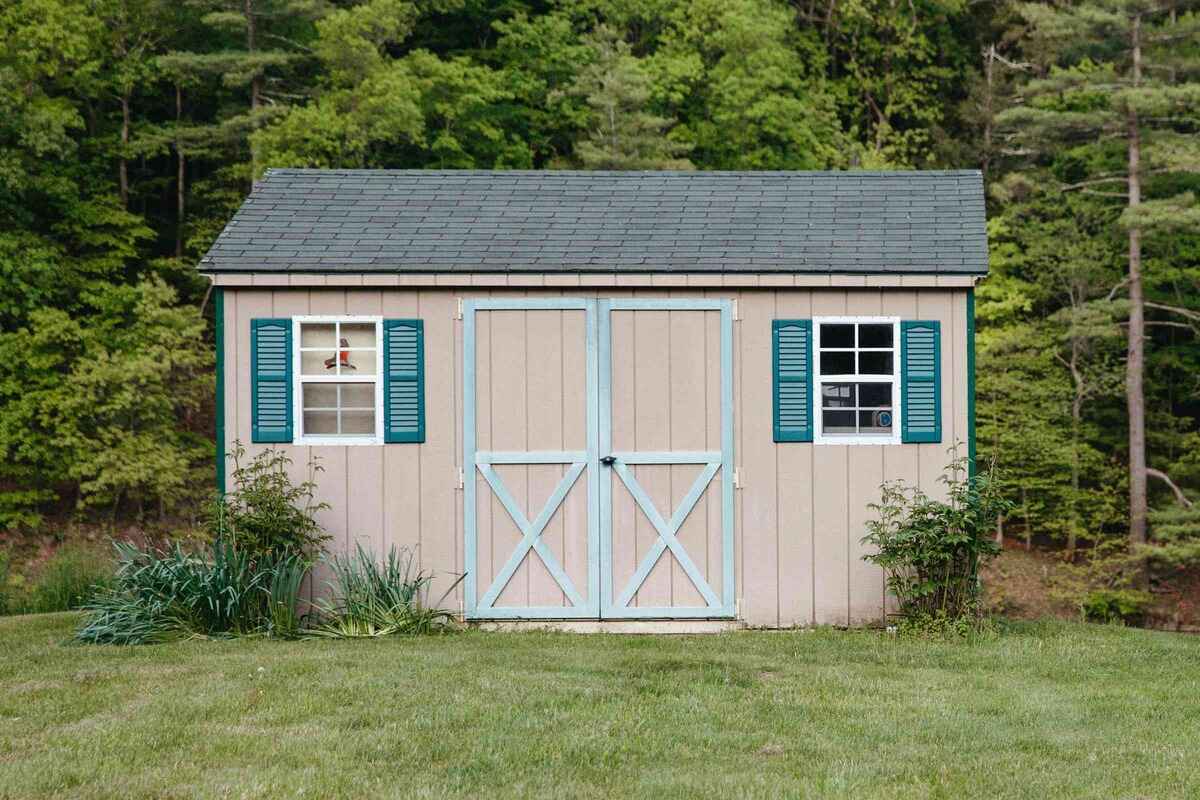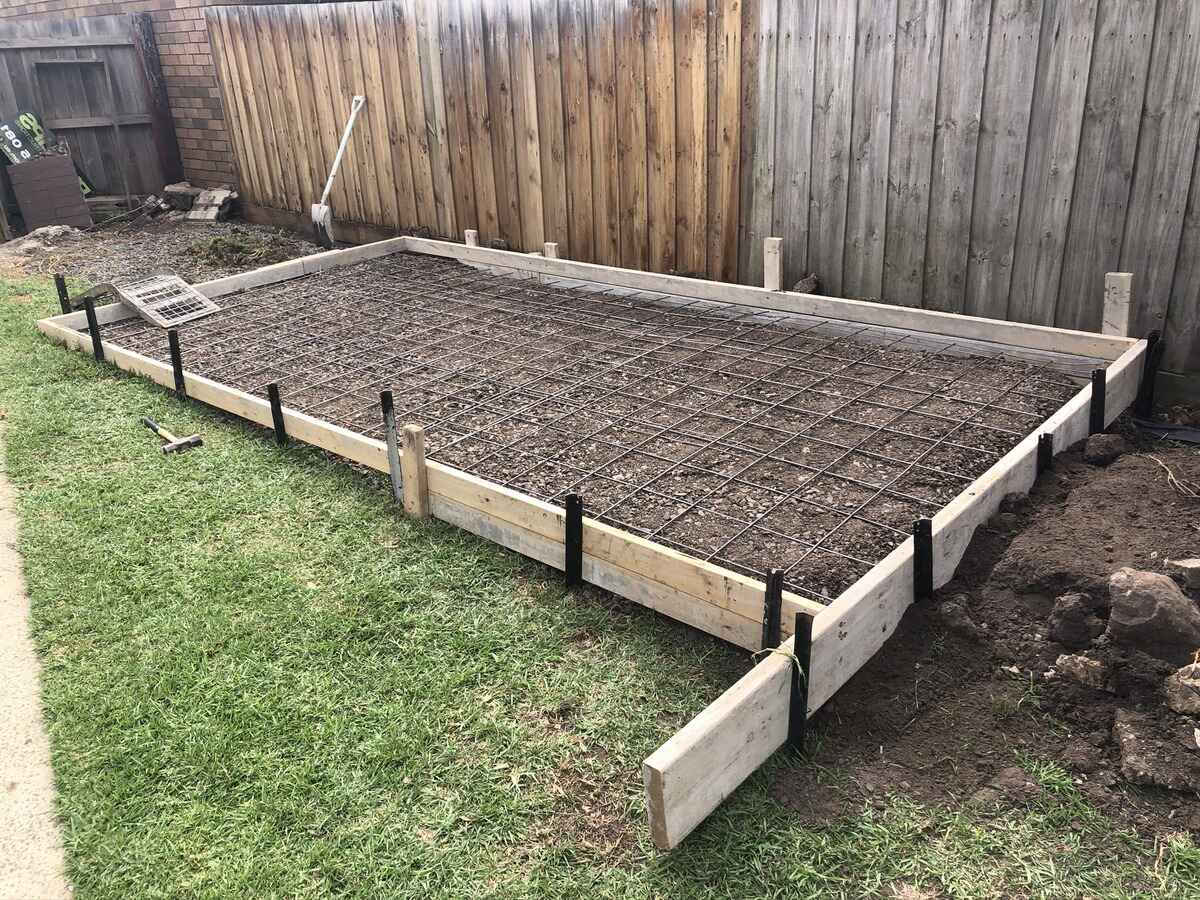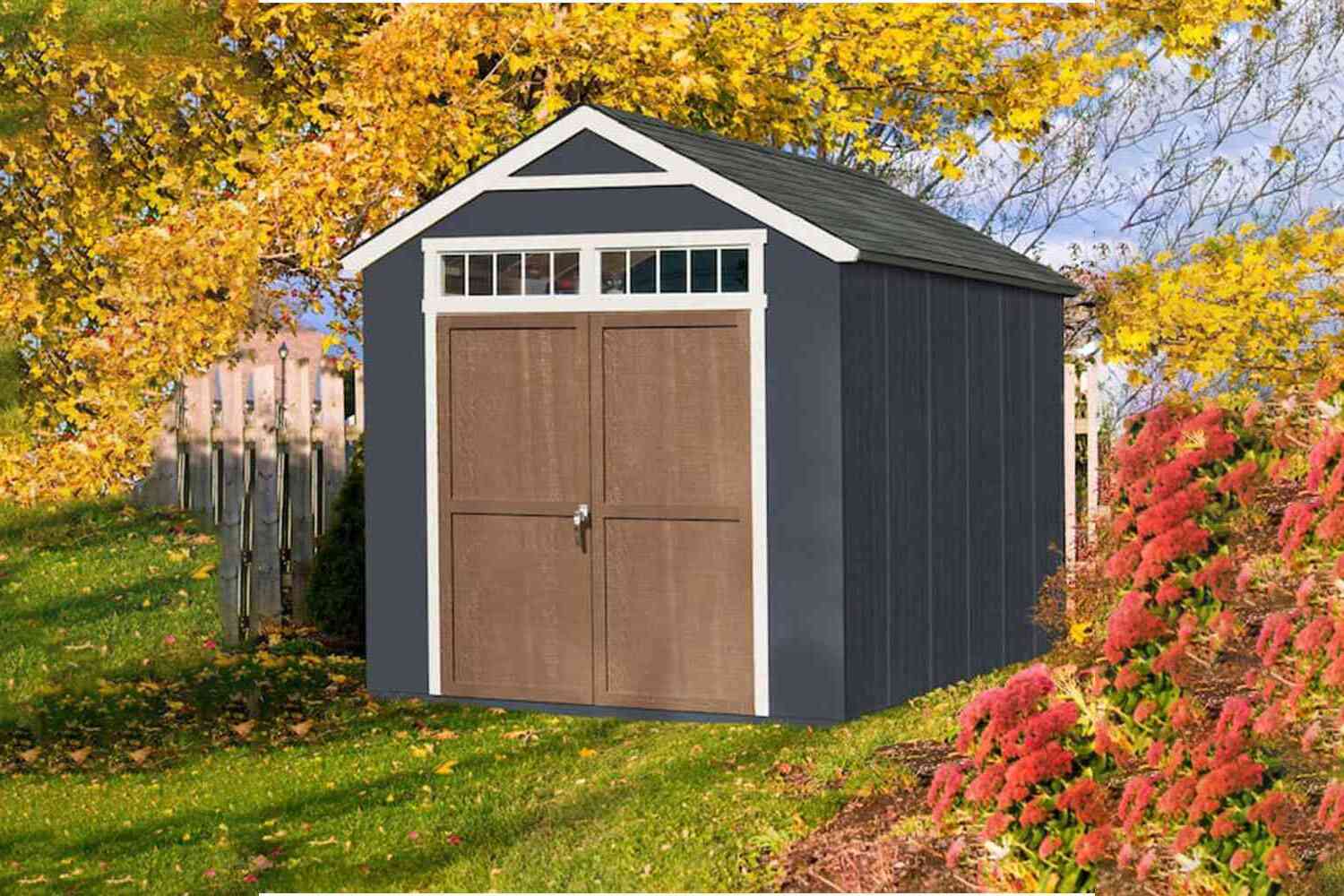Home>Home & Furniture>Garage & Basement>How To Build A Shed On A Slope
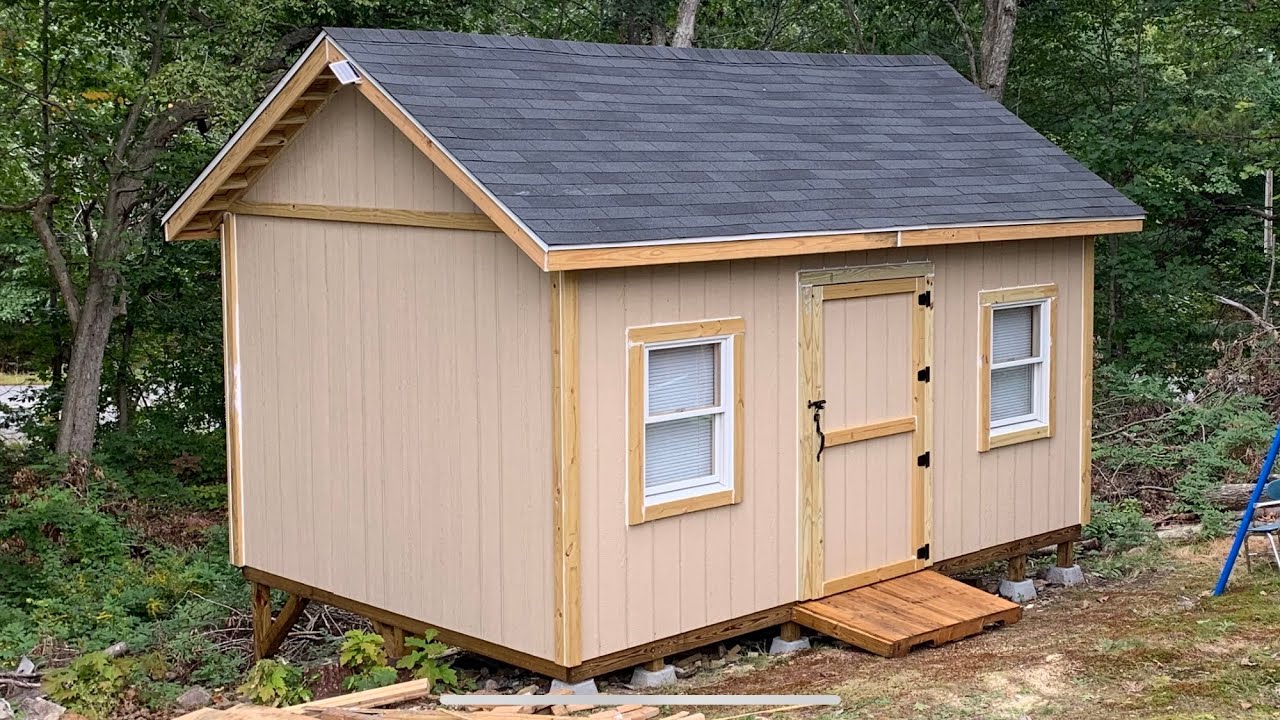

Garage & Basement
How To Build A Shed On A Slope
Published: February 20, 2024
Editor-in-Chief with a decade in home renovation and a passion for vintage furniture. Diane is known for her weekend treasure hunts at flea markets, enriching our content with unique style insights.
Learn how to build a sturdy shed on a slope with our expert tips and techniques. Perfect for garage and basement storage solutions. Discover the best methods for constructing a shed on uneven terrain.
(Many of the links in this article redirect to a specific reviewed product. Your purchase of these products through affiliate links helps to generate commission for Twigandthistle.com, at no extra cost. Learn more)
Introduction
Building a shed on a slope can be a challenging yet rewarding endeavor. Whether you're looking to create extra storage space, a workshop, or a cozy retreat, constructing a shed on uneven terrain requires careful planning and execution. In this comprehensive guide, we will explore the essential steps and considerations involved in building a shed on a slope, from selecting the right location to adding the finishing touches.
Constructing a shed on a sloped surface presents unique challenges that differ from building on level ground. The natural contours of the land can add character and visual interest to your shed, but they also require strategic planning to ensure a sturdy and functional structure. By understanding the intricacies of working with sloped terrain, you can create a shed that not only complements the landscape but also stands the test of time.
Throughout this guide, we will delve into the crucial aspects of building a shed on a slope, including selecting the right location, preparing the sloped ground, building a solid foundation, constructing the shed itself, and adding the finishing touches. Each step plays a pivotal role in the overall success of your project, and by following these guidelines, you can navigate the complexities of sloped construction with confidence.
Whether you're a seasoned DIY enthusiast or embarking on your first building project, this guide will equip you with the knowledge and insights needed to tackle the unique challenges of constructing a shed on a slope. By the end of this journey, you'll be well-prepared to embark on this exciting endeavor, turning a challenging landscape into a stunning and functional space. So, let's roll up our sleeves and dive into the intricacies of building a shed on a slope!
Read more: Sloped Shed Foundation: A DIY Guide
Choosing the Right Location
Selecting the optimal location for your shed is a critical first step in the construction process, especially when dealing with sloped terrain. The right location not only ensures structural stability but also maximizes the shed's functionality and aesthetic appeal. Here's a detailed look at the key factors to consider when choosing the right location for your shed on a slope:
-
Survey the Terrain: Begin by surveying the sloped area where you intend to build the shed. Take note of the natural contours, drainage patterns, and any potential obstacles such as trees or large rocks. Understanding the topography will help you visualize how the shed will fit into the landscape and identify any necessary adjustments to accommodate the slope.
-
Orientation and Accessibility: Consider the orientation of the shed in relation to the slope and the surrounding environment. Positioning the shed parallel to the slope can minimize excavation and foundation work, while also blending harmoniously with the natural contours. Additionally, assess the accessibility of the chosen location, ensuring that it allows for convenient entry and exit, especially if the shed will be used frequently.
-
Drainage and Water Flow: Evaluate the water drainage patterns on the slope, particularly during heavy rainfall. It's crucial to avoid placing the shed in an area prone to water accumulation or runoff, as this can lead to moisture-related issues and compromise the structural integrity over time. Look for a location that promotes natural water flow away from the shed, or consider implementing drainage solutions if necessary.
-
Sunlight and Ventilation: Take into account the sun's path and prevailing winds to optimize natural light and ventilation within the shed. Positioning the shed to capture ample sunlight and airflow can enhance the interior environment and contribute to energy efficiency. Additionally, consider the potential impact of shading from nearby trees or structures, aiming for a location that balances sunlight exposure throughout the day.
-
Aesthetic Integration: Integrate the shed seamlessly into the landscape by choosing a location that complements the natural surroundings. Embrace the slope's unique features and aim to create a visually appealing transition between the shed and the terrain. By harmonizing the shed with its environment, you can achieve a cohesive and aesthetically pleasing result.
By carefully considering these factors, you can identify the ideal location for your shed on a slope, setting the stage for a successful and harmonious construction process. The chosen location will not only influence the structural integrity of the shed but also contribute to its functionality, visual appeal, and overall integration with the surrounding landscape.
Preparing the Sloped Ground
Preparing the sloped ground is a crucial phase in building a shed on uneven terrain. This step sets the foundation for the entire construction process, ensuring stability, proper drainage, and a level base for the shed. Here's a detailed exploration of the essential tasks involved in preparing the sloped ground for your shed:
Clearing and Leveling
Begin by clearing the area of any vegetation, rocks, or debris. This process not only creates a clean canvas for construction but also allows for a thorough assessment of the slope's natural features. Next, focus on leveling the ground as much as possible. While it may not be feasible to achieve perfect flatness on a sloped surface, leveling helps create a more stable foundation and facilitates subsequent construction tasks.
Excavation and Grading
Depending on the severity of the slope, excavation and grading may be necessary to create a more uniform surface for the shed's foundation. This involves carefully removing soil from higher areas and redistributing it to fill in lower spots, effectively reshaping the terrain to accommodate the shed. Proper grading is essential for managing water runoff and preventing erosion, contributing to the long-term stability of the shed.
Read more: How To Build A Single Slope Shed Roof
Retaining Walls and Terracing
In cases where the slope is particularly steep, the construction of retaining walls or terraces may be warranted. These structures help mitigate soil erosion, manage the effects of gravity on the slope, and create level platforms for the shed. When incorporating retaining walls or terraces, it's important to adhere to local building codes and consider the aesthetic impact on the surrounding landscape.
Drainage Considerations
Addressing drainage is paramount when preparing a sloped site for a shed. Implementing effective drainage solutions, such as French drains or swales, helps redirect water away from the shed's foundation, minimizing the risk of water-related damage. By strategically managing water flow on the slope, you can safeguard the structural integrity of the shed and maintain a dry and functional interior space.
Soil Stabilization
Stabilizing the soil on the sloped ground is essential for preventing erosion and ensuring the longevity of the shed's foundation. Techniques such as compacting the soil, installing erosion control fabrics, or utilizing retaining materials can help fortify the ground and create a solid base for the shed's foundation.
By meticulously preparing the sloped ground, you establish a stable and accommodating environment for the construction of your shed. This foundational phase sets the stage for subsequent tasks, laying the groundwork for a resilient and enduring structure that harmonizes with the natural contours of the landscape.
Building a Solid Foundation
Building a solid foundation for a shed on a slope is paramount to ensure the structural integrity and longevity of the entire structure. The unique challenges posed by sloped terrain demand careful consideration and strategic implementation when establishing a stable base for the shed. Here's a comprehensive exploration of the essential steps involved in building a solid foundation on uneven ground:
Read more: How To Build Timber Steps On A Slope
Site-Specific Assessment
Before commencing foundation construction, conduct a thorough assessment of the site to understand the specific characteristics and challenges posed by the slope. Take into account the soil composition, drainage patterns, and the degree of slope to inform the foundation design and construction approach. By tailoring the foundation to the site's unique attributes, you can optimize its stability and resilience in the face of sloped conditions.
Piers and Footings
Incorporating piers and footings is a common approach to establishing a solid foundation on sloped terrain. Piers, which are vertical support structures, are strategically placed to bear the weight of the shed and transfer it to the ground below. Footings, typically made of concrete, provide a stable base for the piers and distribute the load evenly, compensating for the uneven nature of the slope. By carefully positioning and anchoring the piers and footings, you can create a robust foundation that accommodates the slope's variations.
Anchoring and Bracing
Given the potential for lateral forces on a sloped site, anchoring and bracing the foundation is crucial to prevent shifting or instability. Utilize anchor bolts or rods to secure the shed's structure to the foundation, effectively resisting movement caused by gravity and external forces. Additionally, consider incorporating diagonal bracing or cross-bracing within the foundation to enhance its resistance to lateral loads, ensuring the shed remains steadfast on the sloped terrain.
Grading and Leveling
Achieving proper grading and leveling within the foundation is essential to accommodate the slope while providing a stable base for the shed. Utilize leveling techniques to ensure the piers and footings are aligned and positioned at the appropriate heights, compensating for the slope's variations. By meticulously grading the foundation, you can create a level platform for the shed, promoting structural stability and facilitating subsequent construction phases.
Drainage Integration
Integrating effective drainage measures into the foundation design is critical to mitigate the impact of water on the sloped site. Incorporate provisions for proper water runoff and diversion to prevent moisture-related issues that could compromise the foundation's stability. By directing water away from the foundation and implementing drainage solutions tailored to the slope's characteristics, you can safeguard the integrity of the shed's base and ensure long-term durability.
By meticulously addressing these considerations and implementing tailored solutions, you can establish a solid foundation that not only accommodates the challenges of sloped terrain but also provides a resilient and enduring base for your shed. The foundation serves as the cornerstone of the entire structure, anchoring it securely to the slope while withstanding the forces of nature. With a well-constructed foundation, your shed can thrive in its unique hillside setting, offering a functional and reliable space for years to come.
Constructing the Shed
With the solid foundation in place, the next phase involves the actual construction of the shed, where careful attention to the unique challenges of building on a slope is paramount. Here's a detailed exploration of the essential steps involved in constructing the shed on uneven ground:
Framing and Structural Considerations
Begin by framing the shed's structure, taking into account the slope's influence on the design and layout. The framing process should accommodate the variations in terrain, ensuring that the shed remains level and stable. Utilize adjustable post anchors or shims to account for the slope, allowing for precise adjustments to achieve a level frame. Additionally, consider incorporating diagonal bracing or structural reinforcements to enhance the shed's resistance to the gravitational forces exerted by the slope.
Flooring and Decking
When constructing the shed's flooring and decking, adapt to the slope by employing techniques that compensate for the uneven ground. Utilize leveling compounds or adjustable deck supports to create a level and secure base for the shed's interior space and exterior deck, if applicable. By meticulously addressing the slope during the flooring and decking phase, you can ensure a functional and visually cohesive foundation for the shed.
Read more: How To Build A Fence On A Slope
Wall and Roof Assembly
Assembling the walls and roof of the shed requires precision and adaptability to the slope's contours. Implement techniques such as custom-cutting siding and roofing materials to fit the slope, ensuring a seamless and weather-resistant exterior. Additionally, consider incorporating strategic drainage features, such as extended eaves or gutter systems, to manage water runoff and protect the shed from moisture-related issues. By tailoring the wall and roof assembly to the slope, you can create a structurally sound and visually striking shed that harmonizes with the landscape.
Access and Entry Points
Integrate access and entry points that align with the slope's characteristics, providing convenient entry and exit while enhancing the shed's overall functionality. Consider the placement of doors, ramps, or steps to accommodate the slope, ensuring safe and easy access to the shed's interior. By thoughtfully addressing access and entry points, you can optimize the shed's usability while seamlessly integrating it into the sloped terrain.
Finishing Touches and Customization
Once the primary construction is complete, focus on adding finishing touches and customizing the shed to suit your preferences. This may include painting or staining the exterior, installing windows for natural light, and incorporating storage solutions tailored to the slope's layout. Embrace the unique features of the sloped site to enhance the shed's aesthetic appeal and functionality, creating a personalized space that complements the natural landscape.
By meticulously addressing these considerations and adapting the construction process to the challenges of building on a slope, you can create a shed that not only withstands the demands of uneven terrain but also enhances the overall character of the landscape. The construction phase represents a pivotal stage in transforming the vision of a hillside shed into a tangible and enduring structure, ready to serve its intended purpose amidst the natural contours of the terrain.
Finishing Touches
As the primary construction of the shed on a slope nears completion, attention turns to the crucial phase of adding finishing touches and customizing the structure to align with both functional and aesthetic preferences. This stage represents the opportunity to infuse the shed with personalized elements while harmonizing it with the natural contours of the sloped terrain.
Read more: How To Build A Walkway On A Slope
Exterior Enhancement
Enhancing the exterior of the shed involves a range of considerations, from selecting an appropriate color scheme to applying protective coatings. The choice of exterior finish, whether it be paint, stain, or natural wood treatment, can significantly impact the shed's visual appeal and resilience to environmental elements. By carefully selecting finishes that complement the surrounding landscape, the shed can seamlessly integrate into its hillside setting, becoming an organic extension of the terrain.
Windows and Natural Light
Integrating windows into the shed's design not only enhances its aesthetic appeal but also facilitates natural light and ventilation. Strategically positioning windows to capture scenic views and maximize sunlight can transform the interior space, creating an inviting and well-lit environment. Additionally, the selection of window styles and treatments can further accentuate the shed's character while promoting a connection to the outdoor surroundings.
Functional Additions
Customizing the shed to accommodate storage needs and functional requirements is a pivotal aspect of the finishing touches. Incorporating shelving, storage racks, or built-in cabinets tailored to the slope's layout optimizes the interior space, maximizing organization and utility. By thoughtfully integrating functional additions, the shed becomes a practical and efficient storage solution that adapts seamlessly to the sloped terrain.
Landscaping Integration
Embracing the natural landscape surrounding the shed can elevate its overall appeal. Thoughtful landscaping, such as the addition of native plants, shrubs, or decorative elements, can soften the transition between the shed and the slope, creating a visually cohesive and inviting space. By integrating landscaping features that complement the natural terrain, the shed becomes an organic and integrated element within its hillside setting.
Read more: How To Build A Retaining Wall On A Slope
Personalized Details
Adding personalized details, such as decorative trim, signage, or exterior lighting, infuses the shed with individual character and charm. These subtle yet impactful touches contribute to the shed's unique identity, reflecting the owner's personal style and preferences. By incorporating personalized details, the shed becomes a reflection of its owner, embodying a sense of warmth and individuality within the hillside landscape.
In essence, the finishing touches phase represents the culmination of the shed's transformation from a construction project to a fully realized and personalized structure. By carefully attending to exterior enhancements, functional considerations, landscaping integration, and personalized details, the shed on a slope evolves into a harmonious and purposeful space that seamlessly integrates with its natural surroundings.
Conclusion
In conclusion, building a shed on a slope presents a unique set of challenges and opportunities, requiring careful planning, adaptability, and a deep understanding of the terrain. Throughout this comprehensive guide, we have explored the essential steps and considerations involved in constructing a shed on uneven ground, from selecting the right location to adding the finishing touches. By embracing the natural contours of the landscape and tailoring each phase of the construction process to the slope's characteristics, a functional, resilient, and visually striking shed can emerge as a testament to thoughtful design and craftsmanship.
The journey of building a shed on a slope begins with the crucial task of choosing the right location. By surveying the terrain, considering orientation and accessibility, evaluating drainage and water flow, and integrating aesthetic integration, the ideal setting for the shed can be identified. This initial step sets the stage for a harmonious integration of the shed with the natural landscape, ensuring both structural stability and visual appeal.
Preparing the sloped ground is a foundational phase that establishes a stable and accommodating environment for the shed's construction. Clearing and leveling, excavation and grading, retaining walls and terracing, drainage considerations, and soil stabilization collectively contribute to creating a solid foundation for the shed, mitigating the challenges posed by the slope and safeguarding the structure against potential issues.
The construction of a shed on a slope demands meticulous attention to building a solid foundation that accommodates the unique characteristics of the terrain. Through site-specific assessment, the incorporation of piers and footings, anchoring and bracing, grading and leveling, and drainage integration, a resilient foundation can be established, providing a stable base for the shed while addressing the demands of the sloped site.
As the shed takes shape, the construction phase involves framing and structural considerations, flooring and decking, wall and roof assembly, access and entry points, and finishing touches and customization. Each step is tailored to compensate for the slope's variations, ensuring that the shed remains level, stable, and visually integrated with the surrounding landscape.
Finally, the finishing touches phase represents the opportunity to infuse the shed with personalized elements while harmonizing it with the natural contours of the sloped terrain. By enhancing the exterior, integrating windows and natural light, incorporating functional additions, integrating landscaping, and adding personalized details, the shed evolves into a purposeful and visually cohesive space that seamlessly integrates with its hillside setting.
In essence, building a shed on a slope is a testament to the fusion of practicality and artistry, where the challenges of uneven terrain are transformed into opportunities for creating a unique and enduring structure. By embracing the principles outlined in this guide and approaching the construction process with creativity and adaptability, a shed on a slope can become a captivating and functional addition to the landscape, embodying the seamless integration of human craftsmanship with the natural world.

